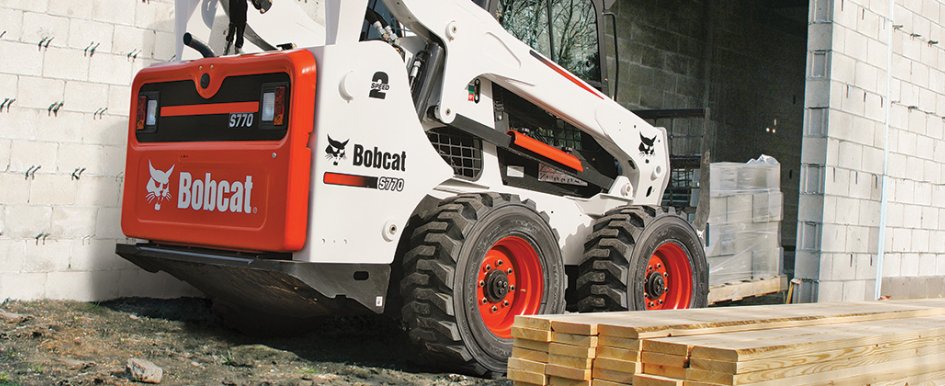
Tires are the power transfer point between the work surface and your loader. Some construction sites have soft ground material like sand or dirt, while other sites consist of rock, asphalt and concrete surfaces, which are more abrasive.
How do you know what type of tire will give you long-lasting performance when paired with a skid steer or all-wheel steer loader? The first step is to determine the application in which you will be using your loader. By starting at the ground level, you can choose a quality tire—pneumatic or solid—that will help you get better performance out of your machine, reduce costly downtime and enhance your business's profitability.
Pneumatic Tires
When faced with general construction tasks, a standard-duty tire would be the best fit. These tires are designed for maximum traction and grip, feature thick sidewalls and are constructed with natural and synthetic rubber. Heavy-duty tires feature superior quality rubber, self-cleaning tread designs and a higher ply rating. Today's tire-ply ratings provide owners with a basis for how much load the tire is designed to carry at its industry-specified pressure. To help protect rims and reduce sidewall damage, some heavy-duty tires feature extra bead guarding. Additionally, heavy-duty tires wear longer and are more resistant to flats compared to standard-duty tires, making them ideal in rough applications. Your tires should be reliable day in and day out in all applications. Severe-duty tires are aggressive, long-lasting and designed to take more abuse than conventional tires in tougher applications. The deep-tread depth and larger surface contact area significantly extend tire service life. Stronger sidewalls protect against cuts and punctures. Turf and super-float tires offer better performance when maneuvering over soft or wet conditions. Both tire types have a design that provides 85 percent more footprint area where extra flotation is required.
Solid Tires
A solid rubber tire will provide the lowest operational cost on the harshest of jobsites. Solid tires are designed to last approximately three times longer than pneumatic tires because they are made from special rubber compounds. The tear strength is more than double that of most pneumatic tires, which helps keep the tire intact when traveling over debris-filled applications.
One solid tire option is the twin flex, which offers a softer ride, reduces vibration and increases driver comfort. The progressive design of the teardrop aperture maintains a circular shape under load, helping to resist stress-point cracking and increase overall tire life. The tires also provide added shock protection to your loader, which helps reduce vibration-related maintenance costs.
Smooth-flex solid tires are well-suited for dry, hard concrete and asphalt surfaces in construction and paving applications. These tires have a wider surface area to promote even wear. A row of elliptical apertures in the sidewall also reduces load stress on the tire and cracking. Smooth and conventional solid tires provide superior performance on hard, compact surface applications because of their durable, cut-resistant rubber material. These tires are typically offered in a narrow or wide base.
- Narrow-base tires have a higher point loading, meaning there will be less spinning and friction for easier maneuvering on hard surfaces.
- Wide-base tires have more rubber and better flotation.
Extending Tire Life
The life of a pneumatic or solid tire depends on a variety of factors, especially the application where it is used. Another factor to take into consideration is initial purchase price. Many tires look the same at a glance, but after researching and comparing brands you will notice the difference. Industry-specific tires can have a higher initial cost, but they typically have thicker sidewalls, more rubber and the correct outside diameter, which affects bucket height-to-ground contact dimensions, compared to off-brand and second-line tires.
Educating your operators on the steps they can take to extend tire life will be beneficial to all parties. For example, when working on asphalt and concrete, it is better to make turns prior to traveling across the hard surface.
Being proactive on maintenance can also help extend tire life. Tire pressure should be routinely monitored to make sure it is at the recommended level. When a skid steer loader sits idle for months, air slowly permeates through the rubber, causing the tires to lose air pressure. By assessing tire pressure each time your machine is in use, you can help save downtime and maintenance costs. Other tips to maximize tire life include:
- Rotate tires that have the potential to wear more quickly.
- Transport the equipment by trailer.
- Consider the weight of your load and keep it balanced.
By reaching out to your local compact loader dealership for tire recommendations on what tire best fits your application, you will experience maximized loader performance.
